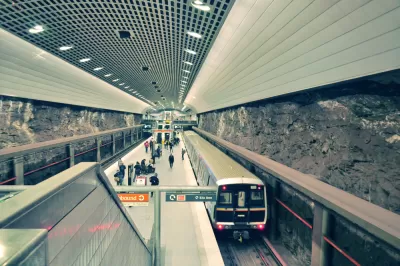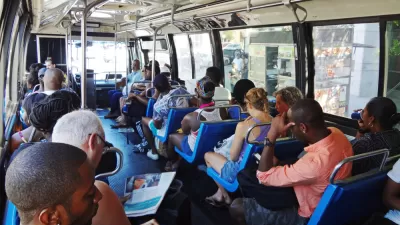After adjusting to COVID-19 protocols and pandemic-era budget cuts, transit agencies must again reorient their service to the post-pandemic world.

Public transit agencies have had it rough for the past year and a half, and as the nation starts to recover from the COVID-19 pandemic, they must adapt yet again to new challenges and opportunities. A blog post from TransitCenter highlights three key challenges and offers solutions for how transit agencies can make the shift to post-pandemic service. "By taking a closer look at these factors, we hope to illuminate the path to successful restoration of service, and shed light on what transit agencies need from their executives, elected officials, and other public agencies in order to provide riders with faster, more reliable trips."
The first challenge is transitioning away from COVID-19 protocols. "As COVID cases drop across much of the United States, transit agencies will need to move away from what is widely seen as 'hygiene theater,' while partnering with public health agencies and other trusted messengers to communicate that transit is safe." The same goes for social distancing rules. "Agencies should advocate for distancing guidelines/requirements on transit to be relaxed in line with falling COVID case rates. States and localities should proactively be adjusting guidelines with both the virus and good transit service in mind."
The third major challenge, the blog asserts, will be hiring and retaining staff. "Widespread operator shortages at agencies across the country have magnified difficulties related to capacity limits" and reduced agencies' ability to provide efficient service. "The need to both expand the pipeline for training and improve pay for transit workers points to the importance of high-level government coordination and securing financial resources to compensate a growing workforce."
FULL STORY: Three Challenges Facing Transit Agencies Emerging From the Pandemic

Alabama: Trump Terminates Settlements for Black Communities Harmed By Raw Sewage
Trump deemed the landmark civil rights agreement “illegal DEI and environmental justice policy.”

Planetizen Federal Action Tracker
A weekly monitor of how Trump’s orders and actions are impacting planners and planning in America.

Why Should We Subsidize Public Transportation?
Many public transit agencies face financial stress due to rising costs, declining fare revenue, and declining subsidies. Transit advocates must provide a strong business case for increasing public transit funding.

Understanding Road Diets
An explainer from Momentum highlights the advantages of reducing vehicle lanes in favor of more bike, transit, and pedestrian infrastructure.

New California Law Regulates Warehouse Pollution
A new law tightens building and emissions regulations for large distribution warehouses to mitigate air pollution and traffic in surrounding communities.

Phoenix Announces Opening Date for Light Rail Extension
The South Central extension will connect South Phoenix to downtown and other major hubs starting on June 7.
Urban Design for Planners 1: Software Tools
This six-course series explores essential urban design concepts using open source software and equips planners with the tools they need to participate fully in the urban design process.
Planning for Universal Design
Learn the tools for implementing Universal Design in planning regulations.
Caltrans
Smith Gee Studio
Institute for Housing and Urban Development Studies (IHS)
City of Grandview
Harvard GSD Executive Education
Toledo-Lucas County Plan Commissions
Salt Lake City
NYU Wagner Graduate School of Public Service





























